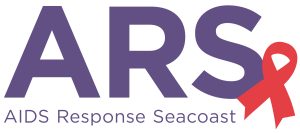How much do you know about HIV? You may be surprised! The following survey is designed to measure your level of knowledge about HIV/AIDS. Please answer each of the following questions. If you do not know the answer to a question, do not guess — just leave it blank.
- A person can be infected with HIV without knowing it. True or False?
TRUE: In fact, according to the Centers for Disease Control, as many as 25% of people with HIV are unaware that they are infected. If they don’t know they are infected, then their partners CAN’T know. This is important to remember if someone tells you, “It’s OK, we don’t have to take precautions—I’m HIV-negative. It’s up to us to take precautions no matter what our partners tell us about their HIV status.
- Someone taking medications to treat HIV can still pass the virus on to others. True or False?
TRUE: Medications may reduce the amount of virus in a person’s system down to a level that is undetectable using today’s technology, but that doesn’t mean that they are free of HIV — it only means that there was not enough virus to be able to detect the virus in the person’s blood. HIV is still present in other areas of the body — it “hides” in brain tissue, lymph tissue, and bone marrow. If the person stops taking the medications, the virus rebounds, and could become resistant to the mediations — leaving the person with limited options for treatment.
- The only way to COMPLETELY ELIMINATE the risk of being infected with HIV is to not have sex and not do drugs. True or False?
TRUE: The only way to COMPLETELY eliminate the risk of being infected is to not have sex and don’t do drugs. This is what we mean when we talk about “abstinence.” For those who are unwilling or unable to not have sex and not do drugs, the question becomes “How do I minimize the risk?” We can help with that! - Having a sexually transmitted infection like genital warts or Herpes can make it easier for someone to be infected with HIV if they are exposed to it. True or False?
TRUE: If a person has another STD or is fighting off some other illness, their body produces an immune response, which basically floods their system with just the kind of cells that HIV targets—the more targets, the better chance HIV has of infecting. Fewer targets means less chance of infection. This is why it’s important for anyone who is sexually active to be screened for HIV and STDs regularly and get treated for any infection.
- You can tell if someone is infected with HIV by looking at them. True or False?
FALSE: In fact many people with HIV look and feel perfectly healthy. Most people with HIV do not become visibly sick until as many as ten years after they’ve been infected.
- Approximately 30% of people with HIV cannot use the medications they need in order to survive. True or False?
TRUE: The medications are not the answer. Many people can’t take them because of side effects, which can be debilitating and disfiguring. Other reasons include cost—the meds are very expensive, and not everyone can afford them after they lose their insurance. The other main reason many people can’t use the medications is because they’ve been infected with virus that is already resistant to medications. For those who cannot use medications, HIV is still a death sentence.
- A person sharing needles cannot be infected with HIV if the needles are only used for tattooing and piercing, or for injecting vitamins or steroids. True or False?
FALSE: Sharing needles FOR ANY PURPOSE can lead to infection with HIV.
- A person can only get HIV from oral sex if they swallow their partner’s sexual fluids. True or False?
FALSE: HIV can infect through tiny cuts and abrasions on the lips, on the gums, on the inside of the cheek, and through membranes lining the back of the throat. The best course of action is to avoid getting sexual fluids in your mouth at all.
- Using non-injection drugs such as alcohol, pot, ecstasy, poppers, cocaine or crystal meth, can increase a person’s risk of being infected with HIV. True or False?
TRUE: Non-injection drugs such as those listed above can increase a person’s risk of being infected with HIV by impairing judgment, which can lead a person to be less cautious about sexual activity, and by dulling the ability to feel pain, which would indicate tissue trauma, which can provide an entry point for HIV if the person’s partner has it. - A person can be infected with HIV as a result of sharing straws, dollar bills, bumpers, and other equipment used for snorting drugs. True or False?
TRUE: Snorting equipment can be tainted with traces of blood from the nasal passages. Remember, drugs that are snorted damage the lining of the nasal passages, often causing slight bleeding. This can provide an entry point for HIV if the other person has it.
- The only people who get HIV from anal sex are men who have sex with other men. True or False?
FALSE: Unprotected anal sex is the riskiest sexual behavior, due to the likelihood of internal trauma, and it makes no difference whether the two people involved are two men, two women, or an opposite sex couple. It also makes no difference whether someone is the insertive partner or the receptive partner—both are at risk.
- Although men and women are BOTH at risk during an episode of unprotected vaginal sex, the woman is at greater risk. True or False?
TRUE: Although both partners are at risk during an episode of unprotected vaginal sex, the woman is a greater risk because of the likelihood of internal trauma, which can provide an entry point for HIV if her partner is HIV-positive.
- Oil-based lubricants (such as hand lotion, baby oil, etc.) can cause a latex condom to break. True or False?
TRUE: Oil dissolves latex, and the longer a latex condom is in contact with a lubricant that contains oil, the more likely it is to break. When choosing a lubricant, check the label to be sure it doesn’t contain oil. Look for a water-based or silicone lubricant such as K-Y, Astroglide, or Wet Platinum.
- During the first three months after infection, it is possible for a person to still test negative for HIV. True or False?
TRUE: It takes 3 months on average for someone to develop enough HIV-antibodies to become detectable on a standard HIV test. This means that after an episode of unprotected sexual activity, or after sharing a needle or bumper with someone, it’s necessary to wait 3 months before being tested—otherwise it’s possible to test negative even if you’ve been infected.
- If you are between the ages of 14 and 18, it is necessary to have a permission slip signed by a parent in order to get an HIV test. True or False?
FALSE: Under NH state law, anyone 14 or older can get an HIV test without their parents having to know about it. However, if someone between the ages of 14 and 18 tests positive for HIV, they cannot be treated without their parents knowledge and written consent.
- Which of the following body fluids CANNOT transmit HIV? A) Blood B) Semen C) Breast milk D) Saliva E) Vaginal fluids F) They all can transmit HIV
The correct answer is D. Saliva is not an infectious fluid unless there is visible blood present.
- Which of the following types of condoms is NOT effective for preventing the spread of HIV? A) Polyurethane B) Natural skin C) Latex D) Female
The correct answer is B. Natural skin condoms have pores which do not prevent viral particles such as HIV from passing through.
- In recent years, HALF of all new infections in the U.S. have occurred in which of the following age groups? A) 0-14 B) 15-24 C) 25-44 D) 45-60 E) 60+
The correct answer is B. - Which activity should be avoided for at least 2 to 3 hours before or after an episode if unprotected oral sex? A) Strenuous exercise B) Discussing your feelings C) Brushing and flossing D) Eating and drinking
The correct answer is C. Brushing and flossing can leave tiny cuts and abrasions on the gums and inside the mouth, which can provide an entry point for HIV if the other person has it.
- How long should a person wait to be tested after a possible exposure to HIV in order to get a reliable result?
A) 3 days B) 3 weeks C) 3 months D) 2 weeks E) 2 monthsThe correct answer is C. Because it takes three months on average for a person to develop enough antibodies to be detectable on a standard HIV test, it is possible for an infected person to still test negative if they are tested too soon.




